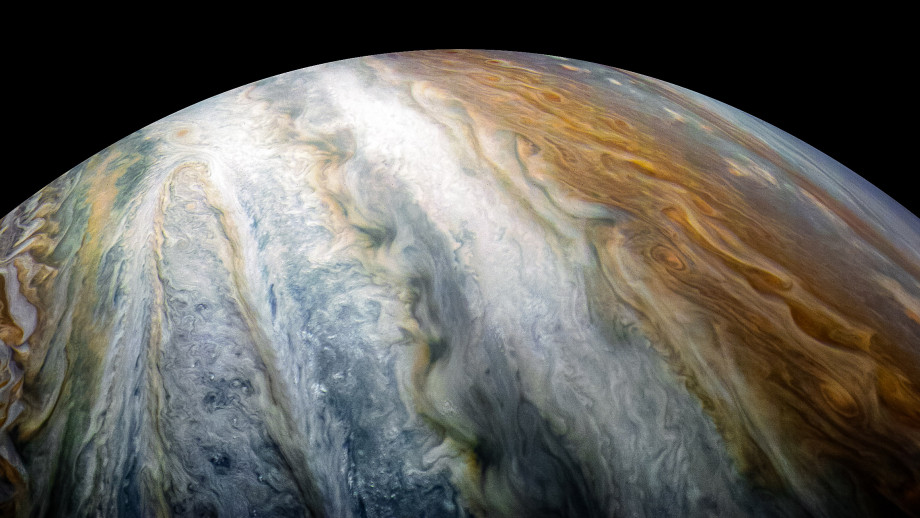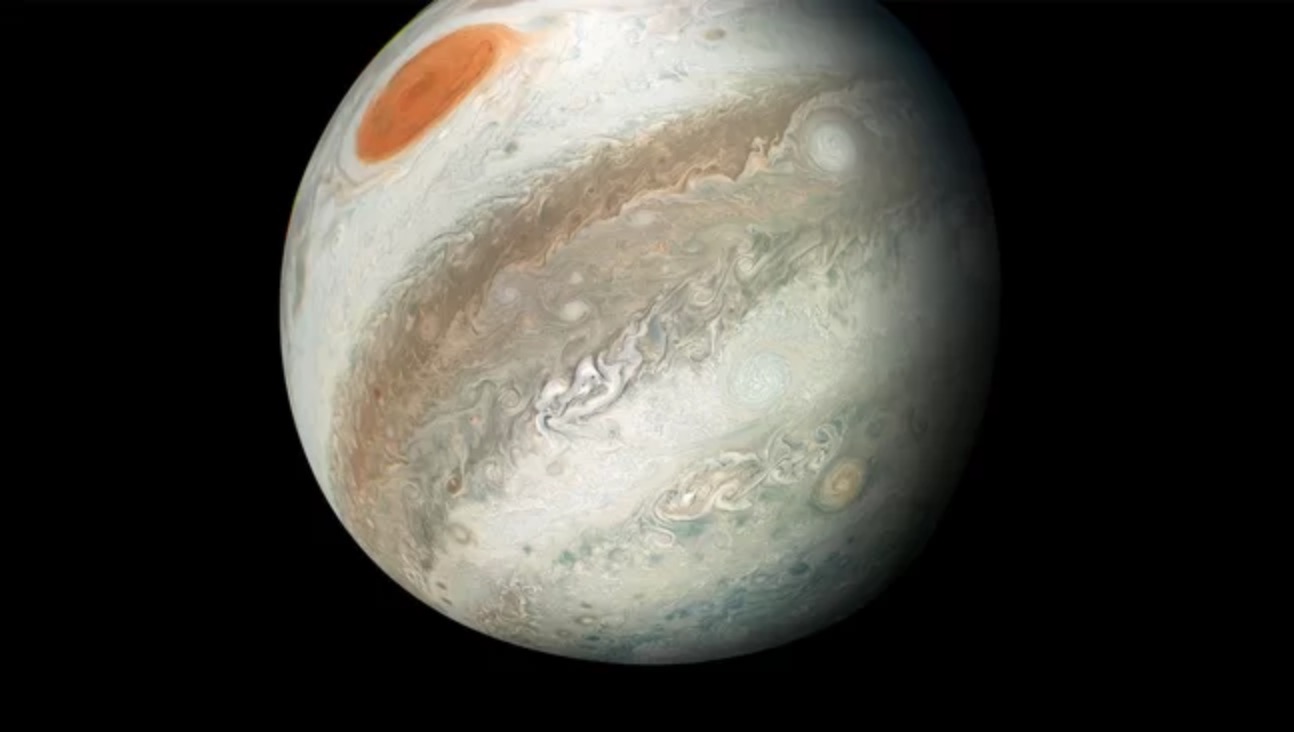Billowy Bands Wrap Around Jupiter As Its Magnetic Field and Jet Streams Play

Jupiter's clouds are fascinating for so many reasons: Their patterns resemble the mesmerizing lines of abstract art, they form storms that last over a century, and they may help us understand what distant worlds around faraway stars might be like.
To better comprehend the billowy bands of Jupiter's atmosphere, scientists at the Australian National University (ANU) collaborated with American researchers to peer inside the depths of Jupiter's clouds. ANU published a statement Friday (Aug. 10) about the new study.
The colorful bands that wrap around Jupiter's outer atmosphere are clouds of ammonia, according to ANU researchers. Like Earth, Jupiter has jet streams (albeit straighter ones than Earth's, which meander) that sweep across the gas giant, carrying these orange, red, yellow, brown and white ammonia clouds. [Juno's Amazing Photos of Jupiter]

"We know a lot about the jet streams in Earth's atmosphere and the key role they play in the weather and climate," Navid Constantinou, a researcher from the ANU Research School of Earth Sciences who worked on the new study, said in the statement. "But we still have a lot to learn about Jupiter's atmosphere."
NASA's Juno mission, which has been studying the Jovian system since July 2016, discovered that the jet streams penetrated 1,864 miles (3,000 km) deep. And according to the space agency's new video, Jupiter acts like a rigid body, with no sign of a jet stream, at deeper depths.
Researchers used mathematical calculations to determine the instability that creates jet streams when magnetic fields are present. According to the statement, the scientists also compared their theoretical predictions with the results from earlier computer simulations.
Their theory, according to Jeffrey Parker from the Livermore National Laboratory in California, suggests that Jupiter's strong magnetic field keeps its jet streams straight and rigid, hence the ammonia-cloud stripes across the gas planet.
Get the Space.com Newsletter
Breaking space news, the latest updates on rocket launches, skywatching events and more!
"The gas in the interior of Jupiter is magnetised, so we think our new theory explains why the jet streams go as deep as they do under the gas giant's surface but don't go any deeper," Parker, who was a co-researcher on the recent study, said in the statement.
"There are no continents and mountains below Jupiter's atmosphere to obstruct the path of the jet streams," Parker added. "This makes the jet streams on Jupiter simpler. By studying Jupiter, not only do we unravel the mysteries in the interior of the gas giant, but we can also use Jupiter as a laboratory for studying how atmospheric flows work in general," he said.
The work was published Thursday (Aug. 9) in The Astrophysical Journal.
Follow Doris Elin Salazar on Twitter @salazar_elin. Follow us @Spacedotcom, Facebook and Google+. Original article on Space.com.
Join our Space Forums to keep talking space on the latest missions, night sky and more! And if you have a news tip, correction or comment, let us know at: community@space.com.

Doris is a science journalist and Space.com contributor. She received a B.A. in Sociology and Communications at Fordham University in New York City. Her first work was published in collaboration with London Mining Network, where her love of science writing was born. Her passion for astronomy started as a kid when she helped her sister build a model solar system in the Bronx. She got her first shot at astronomy writing as a Space.com editorial intern and continues to write about all things cosmic for the website. Doris has also written about microscopic plant life for Scientific American’s website and about whale calls for their print magazine. She has also written about ancient humans for Inverse, with stories ranging from how to recreate Pompeii’s cuisine to how to map the Polynesian expansion through genomics. She currently shares her home with two rabbits. Follow her on twitter at @salazar_elin.









